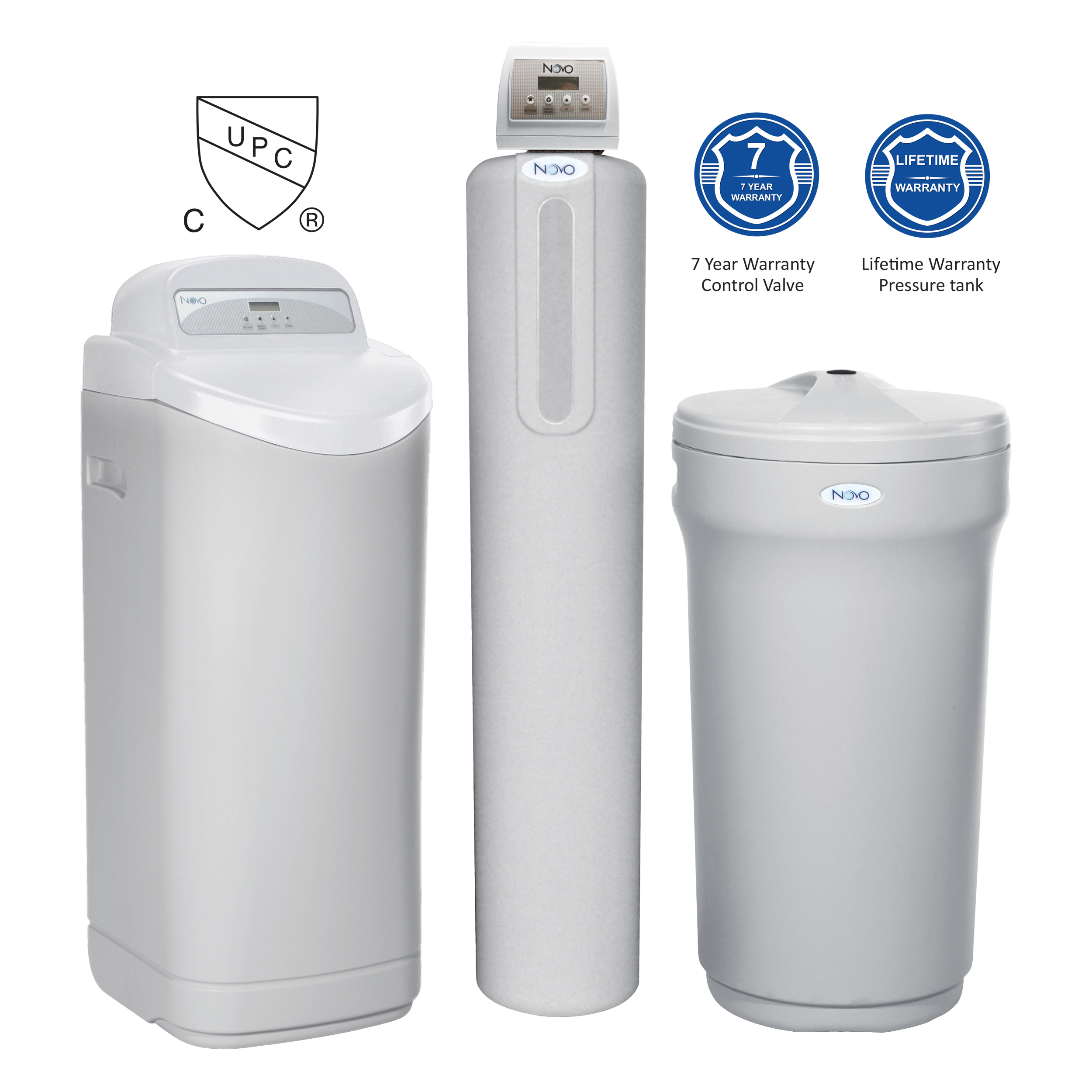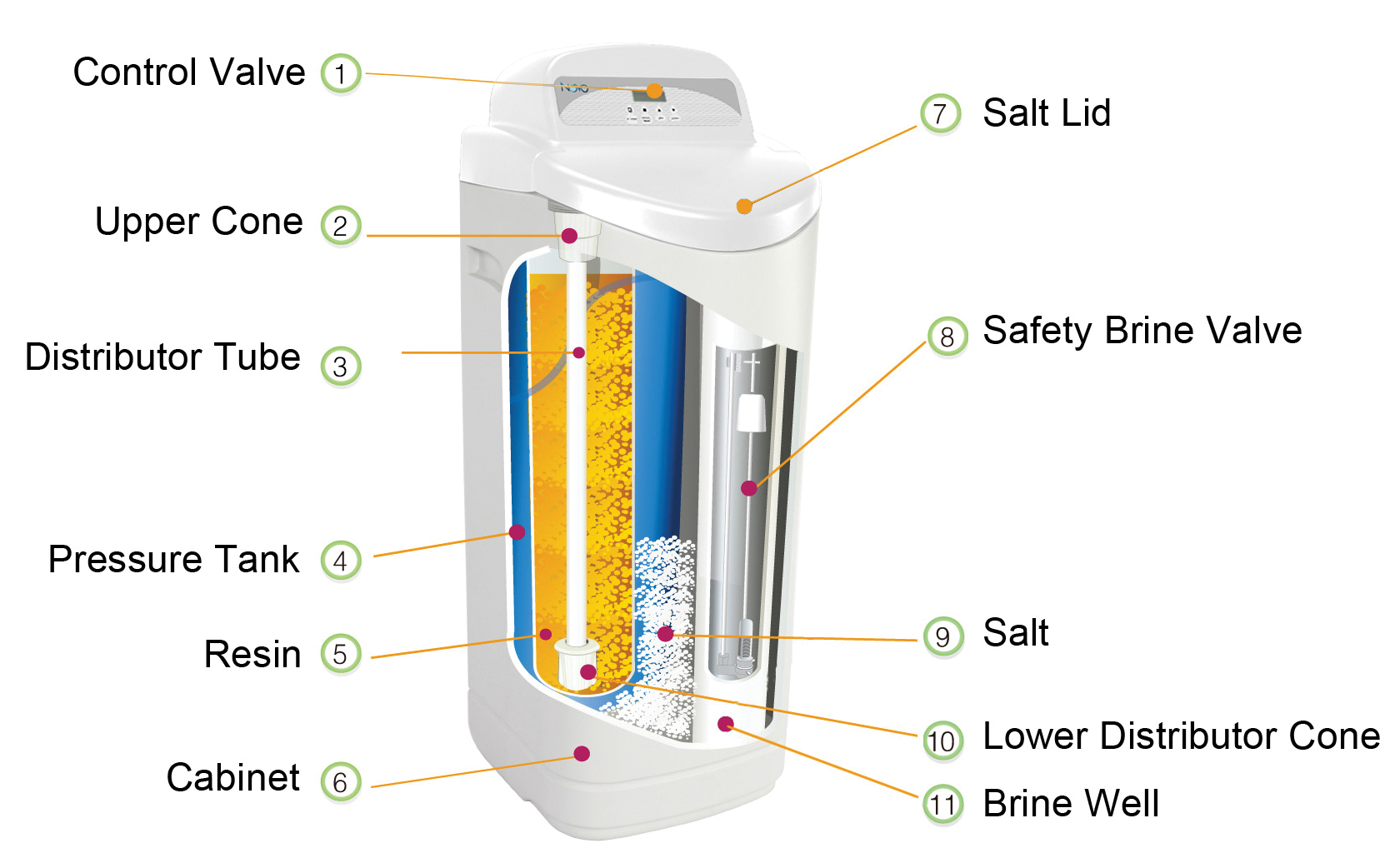How a Water Softener Works
What is a Water Softener?
A water softener is made up of three main components:
Control Valve - determines when regeneration is necessary, the direction of water flow and the amount of time spent in each cycle
Pressure Tank - holds the resin that exchanges sodium for hardness minerals and is under water line pressure
Salt Tank or Cabinet - holds the salt that makes the brine solution used to regenerate the softening resin
How Does a Water Softener Work?
A water softener removes hardness minerals (calcium and magnesium) through a process called ion exchange:
Raw water runs through a bed of sodium charged softening resin contained in a pressure tank
Hardness ions attach to the resin, exchanging with the harmless sodium ions
Eventually the resin contains only hardness minerals and has to be regenerated
The control valve monitors water usage and determines when to regenerate
The resin is backwashed to rinse away impurities
A strong brine solution is then drawn through the bed and hardness ions are exchanged for sodium ions
The hardness ions are then rinsed to the drain
The softener is now ready to soften again



